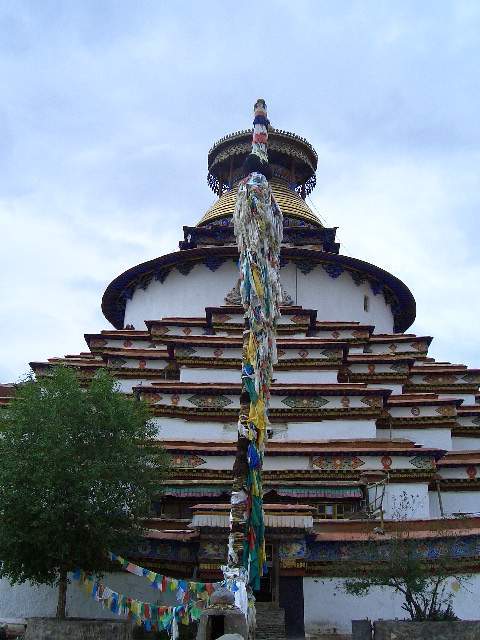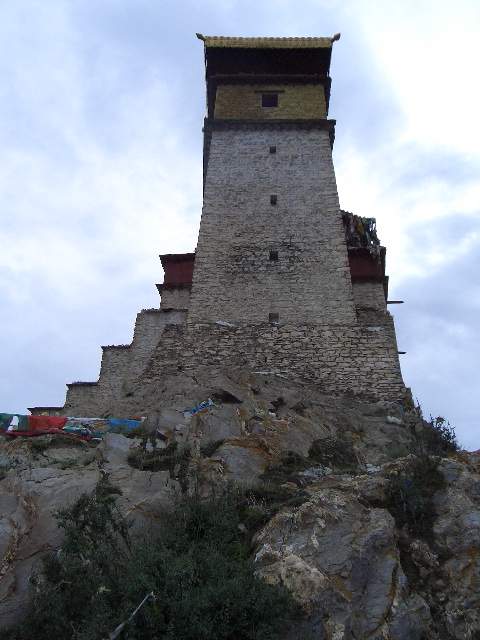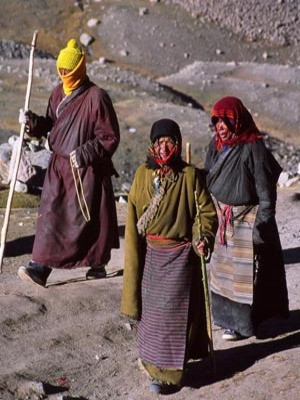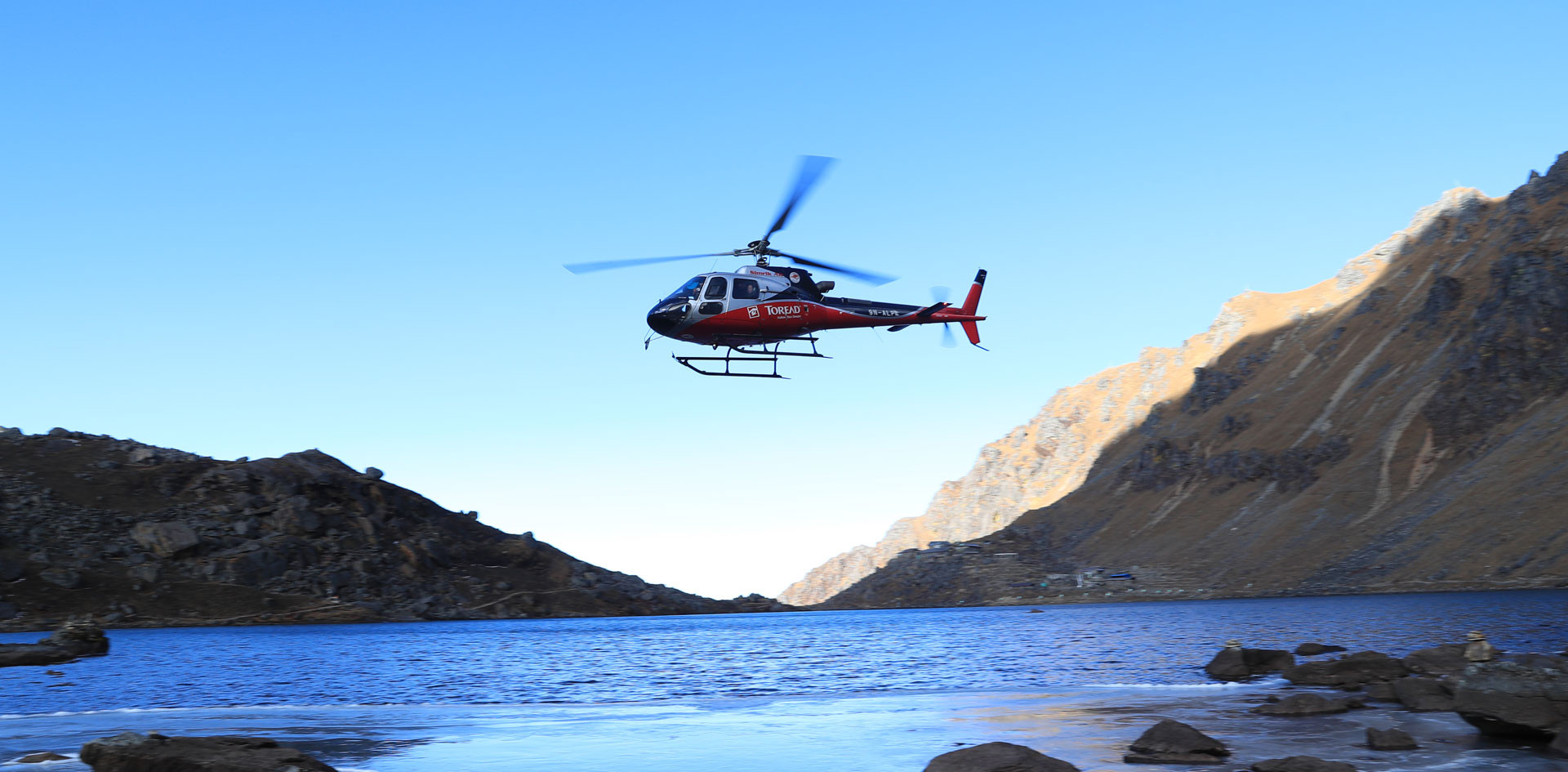Top of the world experience
This classic overland journey from Kathmandu to Lhasa and back via the Friendship Highway is a once-in-a-lifetime adventure across the heart of Tibet. The trip combines breathtaking Himalayan flights, centuries-old monasteries, sacred palaces, traditional Tibetan towns, and the ultimate highlight—an excursion to Everest Base Camp.
Travelers explore the spiritual capital of Lhasa, immerse in Tibetan Buddhist heritage, and journey overland through dramatic landscapes, serene high passes, and fertile valleys before descending into Nepal.
Highlights of Top of the world experience
· Scenic mountain flight from Kathmandu to Lhasa, with panoramic views
of the Himalayas.
· Explore the Potala Palace, Jokhang Temple, Barkhor Bazaar, and the
great monastic centers of Sera &
Drepung.
· Discover the cultural treasures of Gyantse and Shigatse, home to the historic Tashilumpo Monastery.
· Visit important monastic sites including Shalu and Shakya Monasteries, each reflecting Tibet’s unique
spiritual traditions.
· Drive across the dramatic Tibetan plateau with sweeping views of
glaciers, lakes, and rugged mountains.
· Unforgettable excursion to Everest Base Camp (North Face)—a rare
perspective of the world’s highest mountain.
· Journey through frontier towns Shegar, Zhangmu, or Kyirong before
re-entering Nepal
After breakfast, transfer to airport for flight to Lhasa crossing over the panoramic Himalayan ranges (1hr flight). Meet upon arrival and transfer to Lhasa – 65kms | 1 hour
Afternoon at leisure for acclimatization
Lhasa City - The Land of Gods: the capital of the Tibet Autonomous Region is located at the north bank of Kyichu river, a tributary of the Yarlung Tsangpo River, at an altitude of 3,650m above sea-level. Lhasa has a history of more than 1,300 years and it's been the center of politics, economy, culture and religion in Tibet since ancient time "Lhasa" in Tibetan means "the land of gods". There are numerous scenic spots and historical attractions, among which Potala Palace, Norbulingka, Drepung Monastery, Sera Monastery, Jokhang Temple and Ramoche Temple, being the most famous.
Breakfast in hotel
Morning visit of Potala Palace
Afternoon visit of Jokhang Temple and Barkhor street
Overnight in hotel
Potala Palace:
The Potala, one of the most famous architectural works, is erected on top of the Red Hill in Lhasa. The word "Potala" comes from Sanskrit. In 7th century, after the Tibetan King Songtsen Gampo's marriage with Princes Wencheng of the Tang Court, the Palace was built for meditation. In the mid-17th century, it was rebuilt by the 5th Dalai Lama to its present size, and ever since it became the Winter Palace of the Dalai Lamas. The construction took fifty years from its beginning to completion. The Potala is divided into two sections, namely, the Red Palace and White Palace. The total height of the Potala is 117m which is built in thirteen storeys, the length of the Potala from east to west has 400m and the breadth from south to north has 350m. The whole building is a structure of stone and timber. The top most flat glistens with golden roofs. It is a majestic architectural work and the cream of Tibetan culture and complex of Tebatan and Han culture.
The Jokhang Temple:
The Jokhang Temple, situated in the center of old Lhasa, was originally built in 647 AD. It was built by craftsmen from Tibet, China and Nepal thus features different architectural styles. The Jokhang is the spiritual center of Tibet and the holiest destination for all Tibetan Buddhist pilgrims. In the central hall is the Jokhang's oldest and most precious object - a sitting statue of Sakyamuni. This was carried to Tibet by Princess Wen Cheng from her home in Changan in 700 AD. The three-leaves roof of the Jokhang offers splendid views of the Barkhor Street, the bustling Barkhor market, across to the Potala Palace.
Barkhor Street:
This is Lhasa's inner pilgrim circuit shaped roughly like an octagon which runs around the Jokhang Temple and a typical Tibetan market place.
Breakfast in hotel
Morning visit of Drepung Monastery
Afternoon visit of Sera Monastery and Norbulingka
Overnight in hotel
Drepung Monastery:
Situated 5 kms' distance to the western suburb of Lhasa at the foot of Mt. Ganpoi Uze. Drepung Monastery was founded in 1416 by Jamyang Choje, a disciple Tsongkapa, the founder of Gelugpa Sect. The Monastery , occupying an area of 250,000 sq. m. with a fixed number of 7,700 monks, is the largest monastery in Tibet. The monastery keeps plentiful historical relics. Buddhist scriptures, arts and crafts.
Sera Monastery:
Situated at 3 kms' distance to the northern suburb of lhasa. Sera Monastery was founded in 1419 by Jamchen Choje, a disciple of Tsongkapa, the founder of Gelugpa Sect. The monastery is erected grandly at a mountain slope with a colorful architecture. Sera Monastery together with Ganden Monastery and Drepung Monastery in Lhasa are known as the Three Great Monasteries of Tibet.
Norbulingka:
The name means "Jeweled Garden", a fitting title for this 200 years old park, stretching over 360,000 sq. m. The 370 rooms summer palace of the Dalai Lama is located inside the park in Lhasa.
Breakfast in hotel
Drive to Gyantse (311 km-07hrs drive)
Overnight in hotel
Gyantse:
A small agricultural town famous for its wool carpets and the Phalkor Choide Chorten. Before 1959 traders coming from Kalimpong and Gangtok (India) used to enter Tibet through Yandong and then to Gyantse, en route to Lhasa.
Breakfast in hotel
Drive to Shigatse via Shalu Monastery (90 km -02hrs drive)
Visit Tashilumpo Monastery
Overnight in hotel
Shalu Monastery:
Shalu monastery, located within the Salu village near Shigatse. Shalu Monastery was built in the year 1000 by Jetsun Sherab Jungne. The architecture of the monastery with a feature of completely Chinese Yuan Dynasty's temple, it is a rare and unique work of art, mixed feature of Tibetan and Han. The monastery enshrines various relics such as religious objects, Buddhist scriptures written on "pattra" leaves, and an important decree of Pagpa, the Sakya abbot.
Shigatse:
"Shigatse" in Tibetan means " the Estate that fulfills one's Wishes". There is a bustling 'free' market at the foot of the ruins of the Xigatse Fortress where one can buy local handicrafts embedded with coral and turquoise, Tibetan daggers, Chinese porcelain and yak butter.
It is situated between 29o 02'N and 88o 08'E in the south - west of the Tibet Autonomous Region where Nyangchu River joins the Yarlung Tsangpo River. Shigatse is the second biggest town in Tibet and it is the center of transportation and the distributing center of agriculture and husbandry products of south eastern part of Tibet. It is famous for the great Monastery.
Tashilumpo Monastery:
It is the biggest Gelugpa monastery in the Tsang region of Tibet. It is located in the town of Sigatse and was founded by Gedun Drup, a disciple of Tsongkapa, the founder of the Gelungpa Sect. Gedun Drup was later recognized as the first Dalai Lama. It was formerly built in 1447 and continuously expanded by the successive Panchen Lamas. The Ngagpa College (Tantric College), one of its four monastic colleges, was the residence of the Panchen lamas. The most amazing image in this monastery is the statue of the giant Maitreya (Future Buddha) erected by the 9th Panchen Lama in 1914, and took four years for its establishment. This giant statue stands twenty six meters in height and 275 Kg. of solid gold, great quantity of precious things such as pearls, turquoises, corals and ambers have absolved for its construction. The 4th Panchen Lama's funeral stupa was built in 1662 and it stands eleven meters high and it covered with solid gold and silver.
Breakfast in hotel
Drive to Shegar via Shakya Monastery (239 km-08hrs drive)
Overnight in hotel.
Shakya Monastery:
Located in Skaya Country, about 30 kms off the Shigatse-Shegar highway. The monastery stood in two parts on either side of Dongchu River. This monastery is the center of the Sakyapa Sect (White Earth Order). The northern part of the monastery was built in the year 1079 and the southern founded in 1268 by a famous abbot of Sakya named Pagpa who once had ruled the whole of Tibet under the Yuan Dynasty's supervision. The monastery has great influence over the Tibetan history and cultural development. The State Council of PRC has classified it the national level protected monuments. Owing to its valuable and voluminous amount of Buddhist sutras and cultural remains, the monastery is often considered as the "Tunhuang the Second".
Shegar:
A new Chinese commune built at the foot of the ruins of Xegar Dzong, 7 kms. from the main road. With a population of 3000, it is the centre of this large and remote area and a base from which expeditions to Mt. Everest and other peaks are launched.
Breakfast in hotel
Day excursion to Everest base camp and return to Shegar.
Overnight in hotel
Mt. Everest (Qomolangma):
Qomolangma Meaning " Goddess" in Tibetan, is the highest mountain on earth with an altitude of 8848m. Mount Qomolangma, known to the western world as Mt. Everest, stands a the south of Tingri in the southern Tibet, on the border land of the central Himalayas, between China and Nepal, capped with accumulated eternal snow. The optimum weather on Mount Qomolangma is from April to June, an golden period for mountaineers. Each year a great number brave robust mountaineers come from all over the world to tour and climb Mount Qomolangma, hoping to fulfil a life-long wish by climbing and looking out the world's highest peak.
Breakfast in hotel
Drive to Zhangmu (251km-6hours drive) or Kyirong 333kms-7hrs drive)
Overnight in hotel
Zhangmu:
Better known by it's Tibetan name, Khasa. A small settlement clinging to a hillside 10Kms. from the Friendship Bridge across the Bhotekoshi river. Since the closure of the China/India border from Gangtok, Zhangmu has become the major trading point between Tibet and Nepal. The climate is quite different from the hinterland. The hills around Zhangmu are heavily wooded with many waterfalls in summer and impressive ice formations it winter. It has a bank, a post office, a government store, and is presently undergoing a construction boom to meet the demands of trade and tourism.
Breakfast in hotel
After custom and immigration clearance,
Drive to friendship bridge (Tibet-Nepal Border 45 minutes drive)
Cross the bridge and drive to Kathmandu (04 ½ hours drive) and from Kyirong – Kathmandu: 7-8hrs drive.






